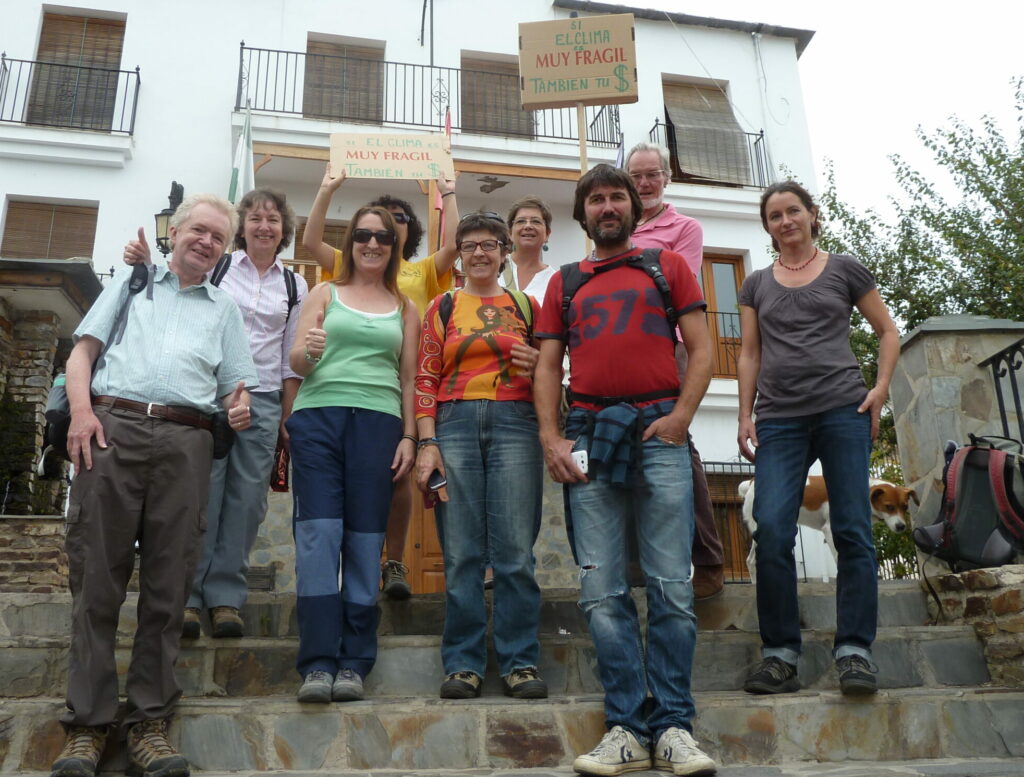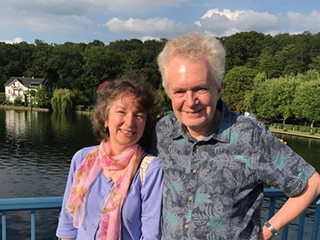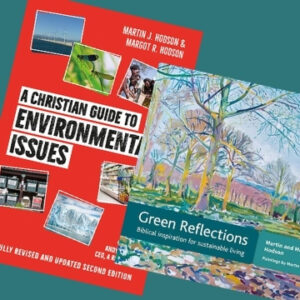As the crucial international climate emergency conference, COP26, begins in Glasgow, our article this week is an edited extract from our recently published revised and updated edition of A Christian Guide to Environmental Issues by Martin and Margot Hodson.
31 October 2021

Christians and the environment: is there hope?
Our growing awareness of the environmental crisis we face leaves many people feeling overwhelmed and paralysed. But challenging though the situation is, there is still hope, and often what people need is the confidence to know where to start. Leading environmentalist Andy Atkins, CEO of A Rocha UK, writes in his Foreword to A Christian Guide to Environmental Issues: ‘Margot and Martin’s engaging book is a great place to start to build confidence… reading it will provide any individual, home group or church with a solid foundation for effective action for all of God’s creation in the critical decade ahead. Read it and pass it on!’
The book is wide-ranging and accessible, deeply rooted both in the latest science and in ancient Christian wisdom. In addition to climate change, it covers seven key areas of environmental concern: biodiversity, water, energy, soil, food, population and consumption and environment and sustainable development.
This edited extract is taken from the closing chapter: ‘A covenant of hope’
A covenant of hope
On 20 and 21 September 2014 a coalition of organisations arranged climate change marches around the world just before world leaders were due to meet to discuss the issue at the UN in New York. The New York meeting was itself a step along the way to the COP21 meeting in Paris in December 2015, at which a global agreement on cutting carbon emissions was due to be signed. Preparations were made for six months before the People’s Climate March. The biggest march was always going to be in New York itself (it was estimated at 310,000 people). In London, the Climate Coalition organised the biggest (approximately 40,000 people) of several marches in the UK, and those present included the actress Emma Thompson, the singer Peter Gabriel and Richard Chartres, the Bishop of London, who gave a powerful speech at the rally.
In September 2014 we were on our sabbatical trip in the Sierra Nevada, Spain. We decided to make every effort to go on a march. We checked on the web, expecting that the nearest march would involve a bus journey into Granada, but we had a surprise when we discovered a march in Pórtugos, a village just a short walk down the road from Pitres where we were staying. We rather expected that the numbers would be small, and set off on the Sunday wondering what we would find. When we got to Pórtugos it was not easy to find the march, and we did quite a lot of marching just to do so! But eventually we found a brave group of environmentalists. There were 13 of us and four dogs, so not quite on the scale of New York or London.
There were thought to be 600,000 people on the marches worldwide, but did they have any impact? We are not sure, but they are a sign of hope. Two days later at the Climate Summit in New York, President Obama at least acknowledged the marches: ‘So the climate is changing faster than our efforts to address it. The alarm bells keep ringing. Our citizens keep marching. We cannot pretend we do not hear them.’
‘So the climate is changing faster than our efforts to address it. The alarm bells keep ringing. Our citizens keep marching. We cannot pretend we do not hear them.’ – President Obama
Climate strikes
Obama was right, and the citizens have kept marching. But it was probably not the ones he expected. I (Martin) use Twitter a lot. For me, it is a useful research tool rather than something to play with. If you follow the right people and organisations, it is possible to find out a lot of useful information, sometimes a long way ahead of the crowd. In autumn 2018, I spotted something unusual. A young Swedish girl called Greta Thunberg seemed to be gathering quite a following with her weekly ‘Fridays for Future’ strikes. Greta started her strikes outside the Swedish parliament building on 20 August 2018. They soon grew into an international youth movement. Throughout 2019 and early 2020 there was a huge amount of activity. Greta’s speeches were turned into a book. In January 2019 at the World Economic Forum in Davos she ended her speech with this statement:
‘Adults keep saying, “We owe it to young people to give them hope.” But I don’t want your hope. I don’t want you to be hopeful. I want you to panic. I want you to feel the fear I feel every day, and then I want you to act. I want you to act as you would in a crisis. I want you to act as if our house is on fire. Because it is.’
Greta Thunberg
We know what Greta means; we desperately want people to take action, and there is a false hope that leads to complacency. But there is a place for real hope, not thrust on to young people, but to keep each of us going in what can be very disheartening times. And there is a place for Christian hope. In this final chapter, we look at what the Bible has to say about hope.
Grace and hope for our world
A theme that has run through this book has been hope for the ultimate renewal of creation, and restoration of the broken relationships between God, people and the rest of nature. This is promised through the unfolding covenant in the Bible. It climaxes in the person and work of Christ, who inaugurates the new creation.
The outcome for Christ was restoration: ‘God exalted him to the highest place’ (Philippians 2:9). The outcome for the world was redemption and the establishment of Christ’s ultimate rule: ‘at the name of Jesus every knee should bow, in heaven and on earth and under the earth’ (2:10). Paul is almost certainly referring to humans at this point, but passages such as Psalm 148 show that every part of creation will one day bow to Christ and praise him. God created the cosmos for his glory. His glory finds fulfilment in the work of Christ.
When we genuinely grasp the amazing grace of God, through all that Christ has done for us, we also bow our knees and find God at work in us for his good purposes. Our call is often to work out these vast cosmic truths in very ordinary ways as we connect with our local communities. How can we make visible our praise of Christ as we follow him together?
Our call is often to work out these vast cosmic truths in very ordinary ways as we connect with our local communities. How can we make visible our praise of Christ as we follow him together?
Epilogue, January 2021
We cannot predict what the future will hold. We do not yet know the result of the 26th UN Climate Change Conference of the Parties (COP26) in November 2021. We don’t yet know the long-term impacts of the Covid-19 pandemic. We continue to hold on to our covenant hope in Christ as we seek to play our small part in building a just and sustainable world. We are strengthened by words from Hebrews 6:19: ‘We have this hope as an anchor for the soul, firm and secure.’ May you also find that hope and may God lead you onward in faith.

Martin and Margot Hodson
Dr Martin J. Hodson is a plant scientist and environmental biologist, and operations director for the John Ray Initiative (JRI). Margot R. Hodson is JRI’s director of theology and education and a vicar in Oxfordshire. She is on the board of Grove Ethics Editorial Group. The Hodsons speak regularly on the environment to Christian audiences.
A Christian Guide to Environmental Issues is currently featured on The Big Church Read. See their latest video here.

Messy Church Goes Wild is the movement within Messy Church which aims to encourage Messy Churches to meet God outdoors, love the natural world, experience a sense of awe and wonder there and to be more eco-aware in all we do, both inside and out, as gathered and dispersed church, for the good of the planet. For more information click here.

Prayer from Martyn Payne
A prayer for COP26
God of justice and compassion,
we cry to you for the future of planet Earth.
We repent with tears for our failure
to manage its resources fairly and
for our short-sighted greed and selfishness.
Stir up in us and our leaders at this time,
a new determination to act
for the good of the poorest among us,
and for the blessing of all creation.
May the debates and discussions
at this conference produce effective
decisions that will make a difference.
Inspire us with bold and creative solutions
that will curb pollution, stay rising sea levels,
clean up our atmosphere
and save our forests; so that once again
you might look on our world
and be able to pronounce it ‘very good’.
Amen
